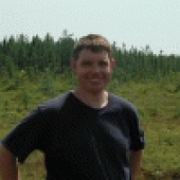Document Type
Article
Publication Title
Geophysical Research Letters
Rights and Access Note
This Item is protected by copyright and/or related rights. You are free to use this Item in any way that is permitted by the copyright and related rights legislation that applies to your use. In addition, no permission is required from the rights-holder(s) for educational uses. For other uses, you need to obtain permission from the rights-holder(s).
Publication Date
1-1-2010
Publication Number
L01305
Volume Number
37
Abstract/ Summary
We use a fracture mechanics model to study subcritical propagation and coalescence of single and collinear oil-filled cracks during conversion of kerogen to oil. The subcritical propagation distance, propagation duration, crack coalescence and excess oil pressure in the crack are determined using the fracture mechanics model together with the kinetics of kerogen-oil transformation. The propagation duration for the single crack is governed by the transformation kinetics whereas the propagation duration for the multiple collinear cracks may vary by two orders of magnitude depending on initial crack spacing. A large amount of kerogen (>90%) remains unconverted when the collinear cracks coalesce and the new, larger cracks resulting from coalescence will continue to propagate with continued kerogen-oil conversion. The excess oil pressure on the crack surfaces drops precipitously when the collinear cracks are about to coalesce, and crack propagation duration and oil pressure on the crack surfaces are strongly dependent on temperature. Citation: Jin, Z.-H., S. E. Johnson, and Z. Q. Fan (2010), Subcritical propagation and coalescence of oil-filled cracks: Getting the oil out of low-permeability source rocks, Geophys. Res. Lett., 37, L01305, doi:10.1029/2009GL041576.
Repository Citation
Jin, Z.-H.; Johnson, Scott E.; and Fan, Z. Q., "Subcritical Propagation and Coalescence of Oil-Filled Cracks: Getting the Oil Out of Low-Permeability Source Rocks" (2010). Earth Science Faculty Scholarship. 91.
https://digitalcommons.library.umaine.edu/ers_facpub/91
Citation/Publisher Attribution
Jin, ZH, Johnson, SE, and Fan, ZQ, 2010, Subcritical Propagation and Coalescence of Oil-Filled Cracks: Getting the Oil Out of Low-Permeability Source Rocks: Geophysical Research Letters, v. 37, L01305. To view the published open abstract, go to http://dx.doi.org and enter the DOI.
Publisher Statement
© Copyright 2010 American Geophysical Union
DOI
10.1029/2009GL041576
Version
publisher's version of the published document








